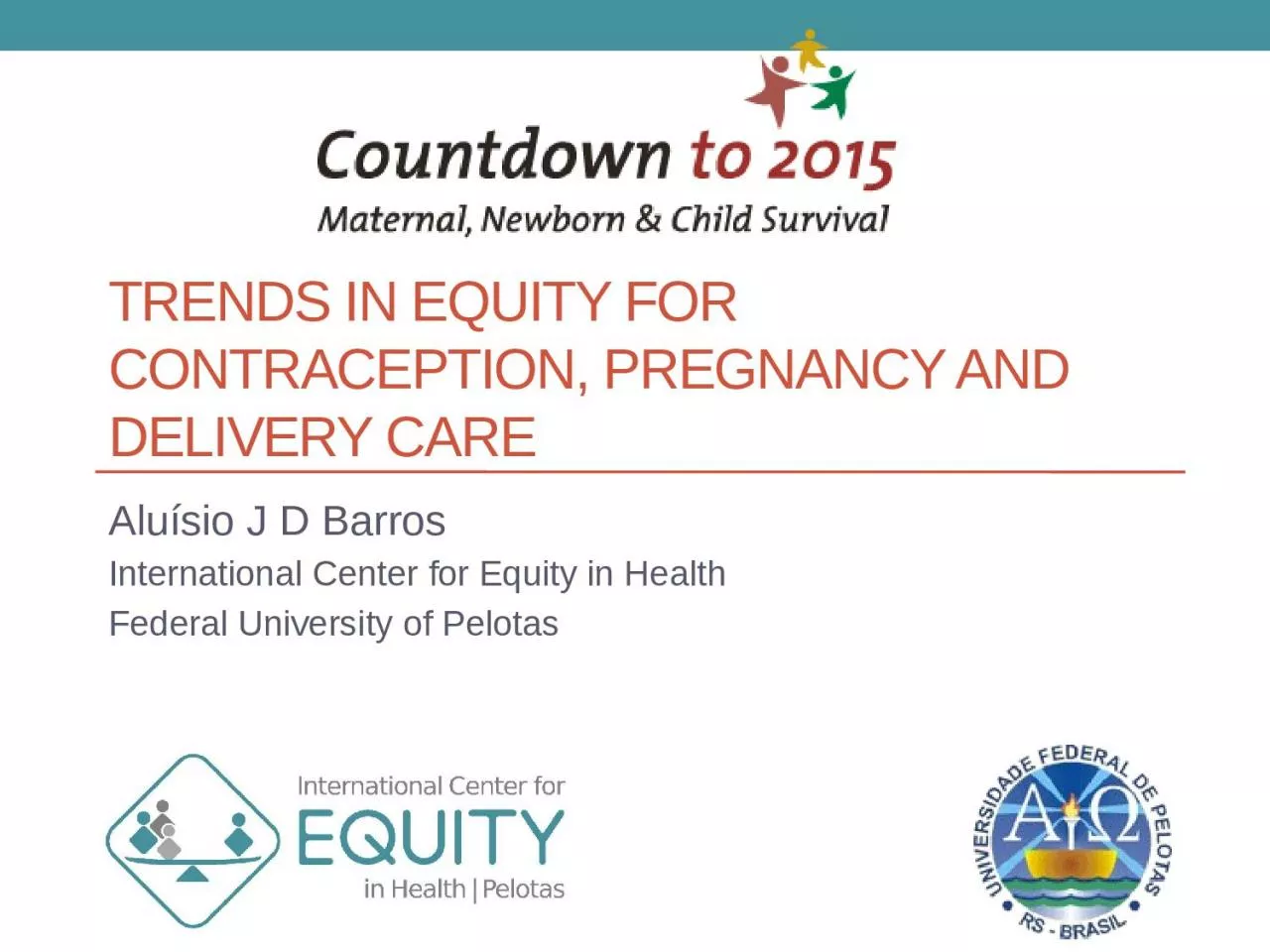

Aluísio J D Barros International Center for Equity in Health Federal University of Pelotas Why equity Many societies see health as a human right not a commodity If so every person is entitled to enjoy the best health achievable ID: 931597
Download Presentation The PPT/PDF document "Trends in equity for contraception, preg..." is the property of its rightful owner. Permission is granted to download and print the materials on this web site for personal, non-commercial use only, and to display it on your personal computer provided you do not modify the materials and that you retain all copyright notices contained in the materials. By downloading content from our website, you accept the terms of this agreement.
Slide1
Trends in equity for contraception, pregnancy and delivery care
Aluísio J D BarrosInternational Center for Equity in HealthFederal University of Pelotas
Slide2Why equity?
Many societies see health as a human right, not a commodityIf so, every person is entitled to enjoy the best health achievableWe’re not all equalBut if health differences between groupsSystematic patterns
Produced by social processes rather than biology
Widely recognized to be unfair
INEQUITY (Whitehead & Dahlgren (2006)
Slide3What do we measure?
Inequality is the measurable dimension of health inequity studiesDifferences, gaps, variationOf health status, exposure to risk factors, access to and utilization of health care servicesAcross several dimensions (or stratifiers)
Wealth, ethnicity, gender, education, age
Absolute and relative
When comparing
groups
one can measure
Distance = absolute, by difference
Ratio = relative, by division
Slide4Mean coverage in each quintile for 54 CD countries
RM interventions are the most unequal!
Slide5Inequality – absolute or relative
Absolute inequalityRemains constant when all groups increase or decrease by the same amount (+ or – Y)Relative inequalityRemains constant when all groups increase or decrease by the same factor (× Y)
Will use the slope index of inequality (SII):
a
regression-based estimate of the difference between the top and bottom of the wealth scale
Will use the concentration index (CIX):
a
Gini
-like measure of concentration of intervention coverage across the population
Slide6Inequality – improving?
<absolute,
<
relative
>
absolute,
<
relative
>
absolute,
>
relative
Slide7Trend plot – how to interpret?
Best situation!
Overall improvement
Intermediate situation!
Only relative inequality improved
Worst situation
Very little change
Slide8Equity trend analysis
Results for 36 countriesWith two surveys about 10 years apartFamily planning need satisfied% women using contraception among those in needComplex indicator based on many variables, some very subjective
Difficult to calculate
Makes more sense than contraceptive prevalence
Antenatal care 1+ visit with skilled provider
At least 1 consultation with skilled provider during pregnancy
Skilled birth attendant
Skilled attendant at child birth
Skilled = doctor, nurse or midwife (with some local adaptations)
Slide9Family planning need satisfied
28/35 countries = 80% improved mean coverage
Slide10Antenatal care (1+ skilled)
28/36 countries = 78% improved mean coverage
Slide11Skilled birth attendant
29/36 countries = 81% improved mean coverage
Slide12Best performing countries in terms of improving equity for six RM interventions
FPS
CPMT*
CPMO*
ANC1
SBA
Benin
Bolivia
Bolivia
Bolivia
Bolivia
Cambodia
Cambodia
Cambodia
Cambodia
Egypt
Egypt
Egypt
Egypt
Haiti
MadagascarMadagascarMadagascar
MozambiqueNigerPeruPeru
Zambia* Not presented in the graphs
Slide13A few conclusions
Equity may seem complicated to assessBut it is not, if you understand the concept and the measuresMost countries studied managed to improve overall coverageAround 80% of themIn contrast, only a handful of countries showed improvement in equity for each indicator
No more than 5 countries with very good improvement
No more than 10 countries with some improvement
SBA was clearly the intervention that improved less in terms of equity